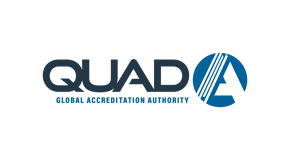******The Following Content Was Published By The American Association of Nurse Anesthetists, American Society of Anesthesiologists and the Anesthesia Patient Safety Foundation*****
The AANA, American Society of Anesthesiologists and the Anesthesia Patient Safety Foundation issued a joint statement today on the best use of personal protective equipment to protect anesthesia professionals during the COVID-19 pandemic. Full statement:
The Use of Personal Protective Equipment by Anesthesia Professionals during the COVID-19 Pandemic
The American Association of Nurse Anesthetists (AANA), American Society of Anesthesiologists (ASA) and Anesthesia Patient Safety Foundation (APSF) believe that the safety of anesthesia professionals is of utmost importance in developing policies related to personal protective equipment (PPE). When anesthesia professionals will be at an increased risk of exposure, such as caring for patients with diagnosed COVID-19 infection and/or when aerosolization of body fluids may occur, N95 masks or powered air purifying respirators (PAPRs) provide the highest level of protection.
Anesthesia professionals should use properly fitted N95 masks or PAPRs (for those who are not fit-tested, have facial hair, or fail N95 fit-testing) when caring for patients with known or suspected COVID-19 and when performing intubation or other procedures that may generate aerosolized small particles. Surgical face masks protect against COVID-19 droplet transmission but do not protect against aerosolized small particles. The CDC has developed a detailed table that describes surgical facemask, N95 mask, and PAPR use, based upon distance from a patient with suspected or known COVID-19 and the use of source control (i.e., masking of symptomatic patients).
Criteria for proper donning and doffing, mask disposal (e.g., contaminated with bodily fluids), and additional precautions (e.g., use of cleanable face shields) should be established using CDC recommendations and proper hand hygiene should be reinforced.
The ASA, AANA, and APSF recognize that population density, hospital size and resources, location, staffing models and access to supply chains present unique challenges to hospitals and clinics. We endorse the thoughtful evolution of the Guidelines developed by the Centers for Disease Control (CDC) provide for guidance and flexibility to hospitals’ and clinics’ staffs across the nation. If a facility has a shortage of N95 masks, temporary mitigation plans based on current CDC recommendations should be enacted. These plans should include case-by-case reviews of the potential of patients and procedures to generate aerosolized particles, as well as assessments of respiratory pathogen characteristics (e.g., routes of transmission, prevalence of disease in the region, infection attack rate, and severity of illness) and local conditions (e.g., number of disposable N95 mask available, current respirator usage rate, and success of other PPE conservation strategies). Healthcare facilities may wish to implement extended use and/or limited reuse practices before shortages are observed so that adequate supplies are available during times of peak need and demand.
The CDC recommends a combination of approaches to conserve supplies while safeguarding health care workers:
- Implement engineering and administrative controls to minimize the number of individuals who need to use respiratory protection.
- Where feasible, use alternatives to N95 masks (e.g., other classes of filtering face piece masks, face piece air purifying respirators, and PAPRs. Click here for more detail on these respirators.
- Implement practices allowing extended use and/or limited reuse of N95 masks.
- Prioritize the use of N95 masks for those personnel at highest risk of COVID-19 exposure and/or those anesthesia professionals in high risk categories (e.g., those with prior health conditions, older age).
- Masks approved by the National Institute for Occupational Safety and Health (NIOSH) typically used in the construction and manufacturing industries but not currently meeting the Food and Drug Administration’s (FDA’s) requirements may be effective in preventing health care personnel from airborne exposure, including COVID-19.
In addition to respiratory PPE, eye protection, gowns, and gloves continue to be recommended when providers are in contact with COVID-19 patients. If there are shortages of gowns, they should be prioritized for use during aerosol-generating procedures.
References
- Centers for Disease Control and Prevention (CDC). Interim Infection Prevention and Control Recommendations for Patients with Suspected or Confirmed Coronavirus Disease 2019 (COVID-19) in Healthcare Settings. https://www.cdc.gov/coronavirus/2019-ncov/infection-control/control-recommendations.html. Updated March 10, 2020. Accessed March 19, 2020.
- Centers for Disease Control and Prevention (CDC). Strategies for Optimizing the Supply of N95 Respirators: Crisis/Alternate Strategies. https://www.cdc.gov/coronavirus/2019-ncov/hcp/respirators-strategy/crisis-alternate-strategies.html. Accessed March 19, 2020.
- Centers for Disease Control and Prevention (CDC). Checklist for Healthcare Facilities: Strategies for Optimizing the Supply of N95 Respirators during the COVID-19 Response. https://www.cdc.gov/coronavirus/2019-ncov/hcp/checklist-n95-strategy.html. Updated March 5, 2020. Accessed March 19, 2020.
- Centers for Disease Control and Prevention (CDC). Recommended Guidance for Extended Use and Limited Reuse of N95 Filtering Facepiece Respirators in Healthcare Settings. https://www.cdc.gov/niosh/topics/hcwcontrols/recommendedguidanceextuse.html. Updated March 28, 2018. Accessed March 19, 2020.
- FDA Press Release: Coronavirus (COVID-19) Update: FDA and CDC take action to increase access to respirators, including N95s, for health care personnel. https://www.fda.gov/news-events/press-announcements/coronavirus-covid-19-update-fda-and-cdc-take-action-increase-access-respirators-including-n95s. Updated March 2, 2020. Accessed March 19, 2020.


